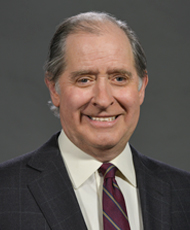Creating abundance as we build transit
May 2023
 As we plan to connect downtown Minneapolis to Brooklyn Park with the extension of the METRO Blue Line, we’re committed to forging a project that strengthens the communities in the corridor. The proposed line will serve many neighborhoods populated by Black, Indigenous, and people of color, and served by small neighborhood businesses.
As we plan to connect downtown Minneapolis to Brooklyn Park with the extension of the METRO Blue Line, we’re committed to forging a project that strengthens the communities in the corridor. The proposed line will serve many neighborhoods populated by Black, Indigenous, and people of color, and served by small neighborhood businesses.
This light rail project creates an exciting opportunity to advance community visions for investment and economic development that can help residents and businesses build wealth in place and enhance the rich connections and communities that already exist. The line should be an engine of opportunity for people who are living there today, instead of a catalyst for gentrification and displacement.
For more than a year, the University of Minnesota’s Center for Urban and Regional Affairs (CURA) has been facilitating a working group of neighborhood residents, businesses, community organizations, and nonprofits in the corridor. Their task was to identify desired outcomes and develop a series of recommendations for building a Blue Line Extension that helps build better lives for the people in the communities it will serve. CURA’s report, issued this month, identifies a range of desired policies to achieve those outcomes.
The policy recommendations range from giving renters first choice of purchasing their building should a property owner decide to sell, to prioritizing corridor residents in workforce development for construction of the line, to creating commercial and residential land trusts to prevent gentrification.
A fundamental principle behind the recommendations is that the primary beneficiaries of this massive transit investment should be the people and businesses who are currently living and working along the proposed route. Ricardo Perez, an organizer for the Blue Line Coalition, described it well when he said the opposite of displacement shouldn’t be viewed as “anti-displacement” -- a negative concept. “The opposite of displacement is abundance…If we can’t demonstrate how this is a train that will create abundance for the community, we won’t win their support.”
As the report makes clear, creating a transformative project will take committed collaboration and support from all levels of government, the business community, and philanthropic and community organizations. It will require transparency and shared decision-making. We’re asking anyone who is interested to review the report and give us the benefit of your advice and input. Read the report here.
When this project is complete, we want to ensure that the neighborhoods we serve are stronger and more vibrant than they were when the project started. As Ricardo Perez said, “We’re done just trying to survive, we want to thrive.”